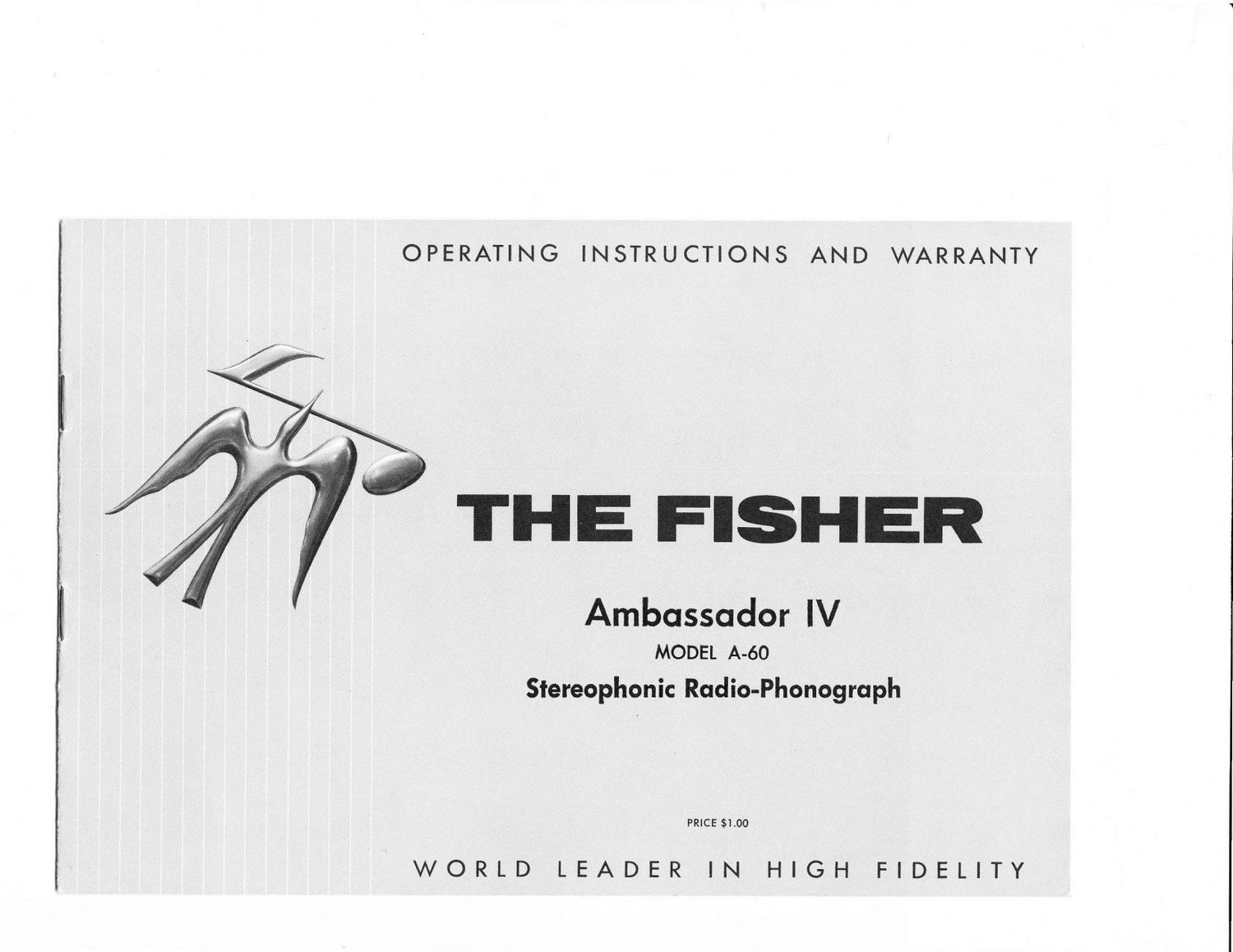Fisher AMBASSADOR 4 A 60 Owners Manual
This is the 10 pages manual for Fisher AMBASSADOR 4 A 60 Owners Manual.
Read or download the pdf for free. If you want to contribute, please upload pdfs to audioservicemanuals.wetransfer.com.
Page: 1 / 10
